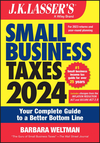Tax Rules of Yore: Tax Breaks You Can’t Use Now But …

The tax law is a moving target. If you look at any given moment, you’ll see rules that may disappear at a later glance. In the past several months, JKLasser.com has been asked about each of the following tax breaks that no longer exist. Are there replacement provisions of similar or equal benefit? Could the old rules be revived in the future?
Maximum (max) tax
When the basic income tax rates ran as high as 70%, the Tax Reform Act of 1969 set a maximum tax of 50% on earned income (it was phased in by 1971). Thus, while higher tax rates could apply to interest income and other investment income, personal service income (e.g., wages, bonuses, commissions, and net earnings from self-employment) could never be taxed at a rate higher than 50%.
Repealed:The Economic Recovery Tax Act of 1981 repealed the max tax for tax years after 1981.
Today:There is no cap on the tax rate related to earned income. In fact, if earned income is high enough, there is an additional Medicare tax on earned income over a threshold amount.
Note: A proposed law entitled the Alternative Maximum Tax (Max Tax) Act (H.R. 4512) would cap total taxes (e.g., income taxes, Social Security and Medicare taxes, state and local taxes, fuel taxes) that an individual would pay annually at 50%.
Income averaging
Income averaging for all taxpayers was a way to effectively lower the tax rate on this year’s income by spreading it over a number of prior (lower income) years to find an average tax rate for it.
Repealed:Under the Tax Reform Act of 1986, the general 4-year income averaging rule expired in 1986.
Today:Income averaging can be used only by farmers and fishermen for their business income and, in some cases, for lump-sum retirement plan distributions.
New home buyer credit
When the housing market collapsed in 2007 and 2008, a special tax credit was created to incentivize home ownership. The credit was up to $7,500 for purchases in 2008; the credit is repaid over 15 years. The credit for 2009 through April 2010 (April 2011 for certain foreign service personnel) was up to $8,000; there was no repayment after 3 years of ownership.
Repeal:The credit was left to sunset at its expiration. There was a brief extension for those in contract to buy a home by April 30, 2010; they could claim the credit if they closed by September 30, 2010.
Today: There is no tax credit for buying a home and, in view of the reviving housing market, it’s unlikely that the credit will be reinstituted any time soon. Those who claimed the credit in 2008 continue to “repay” the credit by reporting 1/15th as income each year; the repayment period will end in 2024.
Deferral on home sales
Homeowners who were not at least 65 years old and eligible for a special exclusion were able to defer tax on gain from the sale of their homes by reinvesting the sales proceeds in a replacement home. The replacement period was 2 years.
Repealed:The Tax Relief Act of 1997 ended the deferral rule for home sales after May 6, 1997.
Today:Homeowners can avoid tax on gain from the sale of their homes up to $250,000 if single or $500,000 if married filing jointly. To qualify, the home must be owned and used as a principal residence for 2 of the 5 years preceding the date of sale.
Investment tax credit
President Kennedy proposed a tax credit for businesses that made capital investments as a way to spur the economy. The credit, which was enacted in 1962, ranged generally from 7% to 10% of investments, up to a set limit annually.
Repealed:The Tax Reform Act of 1986 repealed the basic investment tax credit retroactively for investments made on or after January 1, 1986.
Today:Some aspects of the investment tax credit continue in effect today (e.g., a credit for improving historic buildings). Also, incentives for businesses to make capital investments still exist in the form of the first-year expensing (Sec. 179) deduction and bonus depreciation. These incentives have been changed in amount over the years. Currently, the Section 179 deduction is limited to $25,000 and bonus depreciation expired. However, pending legislation would increase the Section 179 deduction to $500,000 and reinstate 50% bonus depreciation.
Conclusion
You can find a list of disasters qualifying for IRS relief at www.irs.gov/uac/Tax-Relief-in-Disaster-Situations. Also check out the IRS’s Disaster Relief Guide for Individuals and Businesses at www.irs.gov/pub/irs-pdf/p2194.pdf.



